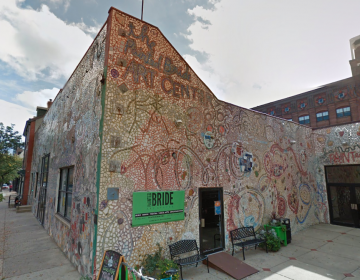Look Up! Henry Disston’s Company Town
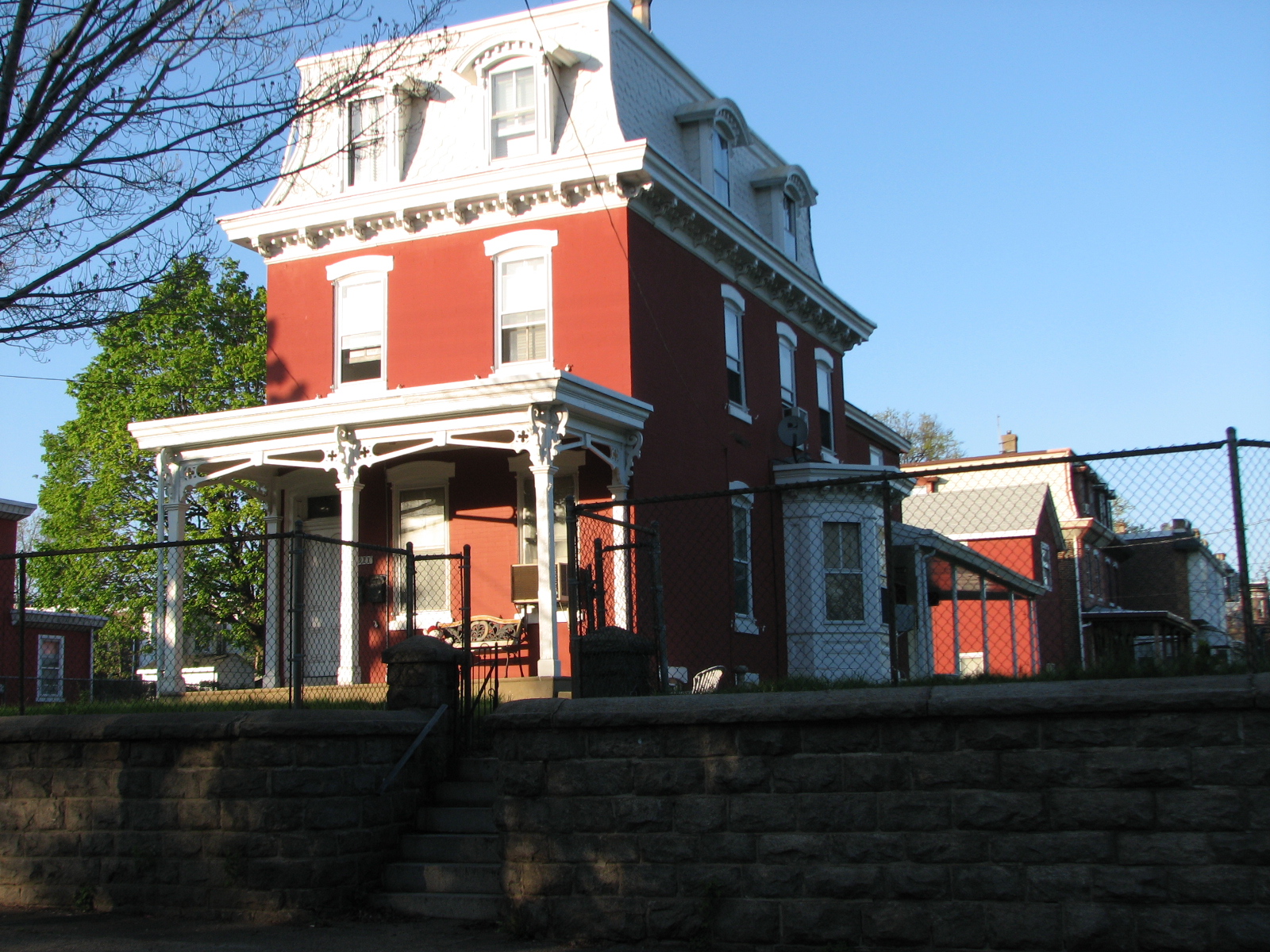
May 3, 2010
By Alan Jaffe
For PlanPhilly
“Look Up” is a PlanPhilly feature that encourages appreciation of our architectural and historical environment. Each week, the photo essay will focus on a different Philadelphia area neighborhood and its distinctive building styles and details, all of which make up the physical fabric of the city and region.
In the mid-19th century, the area to the northeast of Philadelphia known as Tacony — derived from a native American word for “forest” or “uninhabited land” – became the terminus of the Philadelphia and Trenton Railroad. Because the rail line was denied access to Philadelphia by the city government, passengers disembarked at Tacony and took a boat downriver. Hotels and taverns sprung up in Tacony to serve travelers en route to the city.
Henry Disston, owner of the Disston Saw Works in the Northern Liberties section of the city, recognized the potential of moving his factory to the rail and water terminus and establishing a company town in Tacony. He purchased 390 acres and laid out a community of riverfront workshops, streets, sewers, schools, a bank, and row houses, with a linear park buffering his workers’ homes from the factories. Disston’s company grew into the world’s largest saw manufacturer.
Though the factories are mostly shuttered now, much of the Disston company town still stands, many of its homes preserved by residents, its institutional buildings reused by the community, and its heritage recorded by the Historical Society of Tacony.
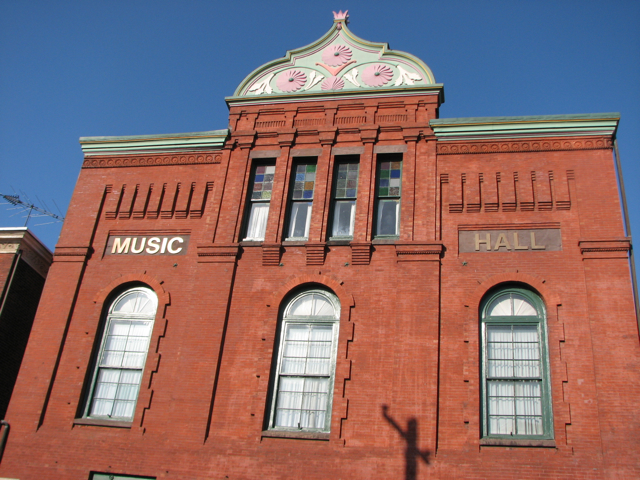
The Tacony Music Hall was erected in 1885 on Longshore Avenue at Edmund Street for first-floor retail and second-floor musical performances, lodge meetings and lectures. Speakers included P.T. Barnum and Susan B. Anthony. The first floor is now used by a pre-school, dance school, real estate office, and the Historical Society of Tacony. The hall is the only building in Tacony on the National Register of Historic Places.
This Victorian home with carriage house was built in 1875 for Jonathan Marsden, who Disston brought from England for his expertise in producing the hardest, most flexible steel.
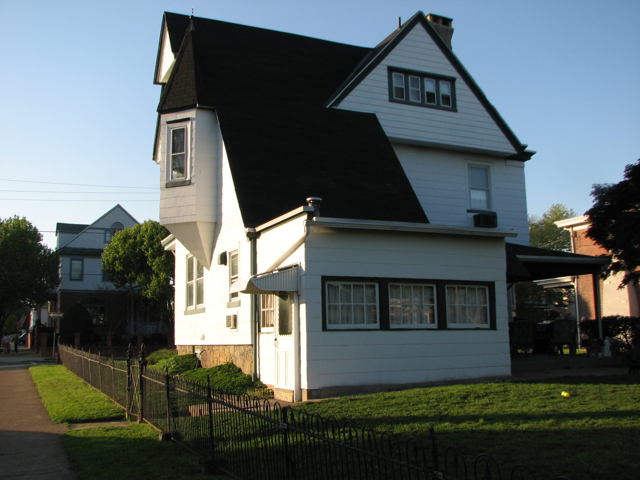
This angular, wood framed home was built in the 1880s for Albert Butterworth, who coached the Tacony sports teams.
Disston’s workers kept their money in or borrowed from the Tacony Savings Fund, built in 1873 and operated by Henry’s son Jacob.
The two- and three-story brick row houses along Tulip Street were built for Disston laborers. Because of their design by English workmen, this block was known as “Castle Row.”
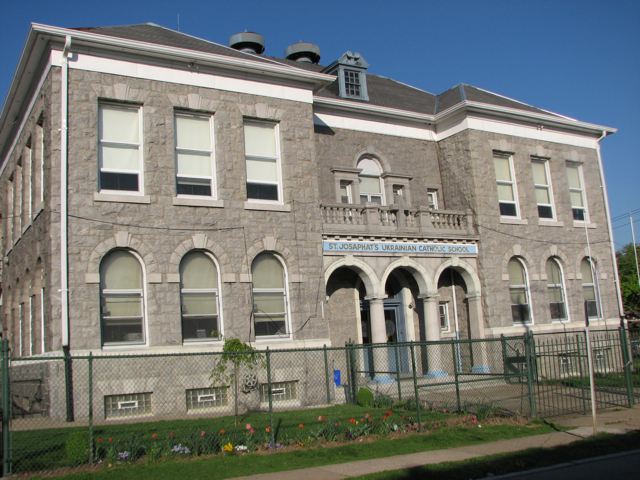
St. Josephat’s Ukrainian Catholic School was built in the 1890s as the Mary Disston Elementary School for girls, named for Henry’s wife.
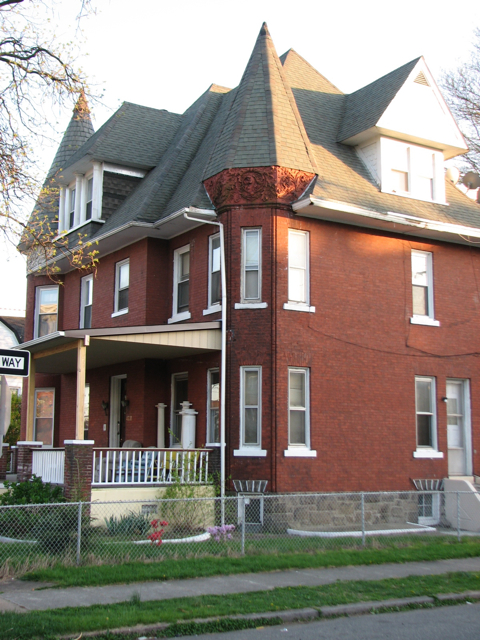
This structure at Ditman and Disston Streets was the home of Frank Shuman, a solar energy pioneer and inventor who perfected an electroplating process to coat the statue of William Penn atop City Hall. His uncle was the president of Tacony Iron and Metal Company, where the Penn statue was cast.
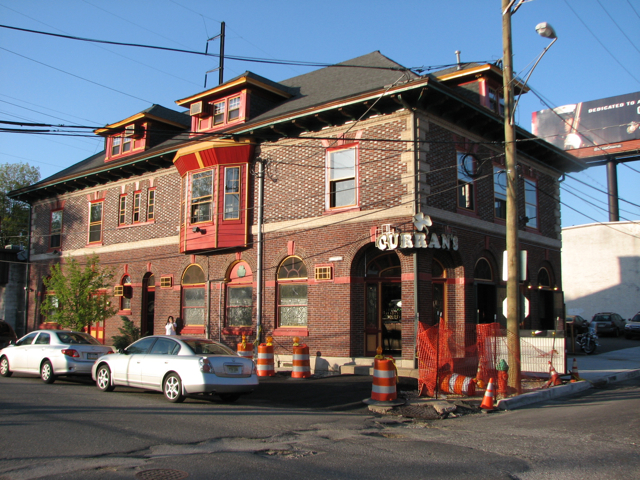
Curran’s Irish Inn was formerly the Harbot Hotel, which served passengers of the Philadelphia and Trenton Railroad in the mid-1800s.
The Tacony Baptist Church added a wing in 1915 built with recycled grindstones donated by the Disston Saw Works. The stones, used to sharpen the saw blades, were dug loose from the factory yards, then broken, squared and trimmed for the “Grindstone Church.”
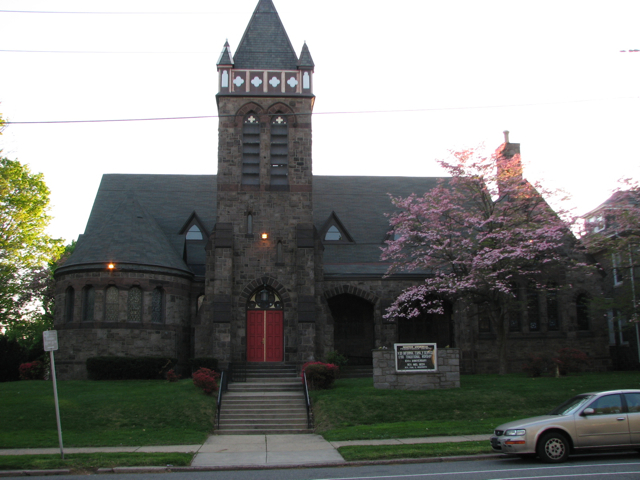
Disston Memorial Presbyterian Church, dedicated in 1886, was a gift from Mary Disston as a monument to her infant daughter who died of tuberculosis.
Video:
Louis M. Iatarola, board member of the Historical Society of Tacony, explains the history of the Disston Saw Works Building.
“Look Up: and check out Spruce Hill
“Look Up” and check out Green Street
“Look Up” and check out West Laurel Hill
“Look Up” and check out Parkside
“Look Up” and check out Awbury Arboretum
“Look Up” and check out Nicetown
“Look Up” and check out Greenbelt Knoll
“Look Up” and check out Overbrook Farms
“Look Up” and check out Girard Estate
“Look Up” and check out Rittenhouse/Fitler Square
Contact the writer at alanjaffe@mac.com.
WHYY is your source for fact-based, in-depth journalism and information. As a nonprofit organization, we rely on financial support from readers like you. Please give today.




